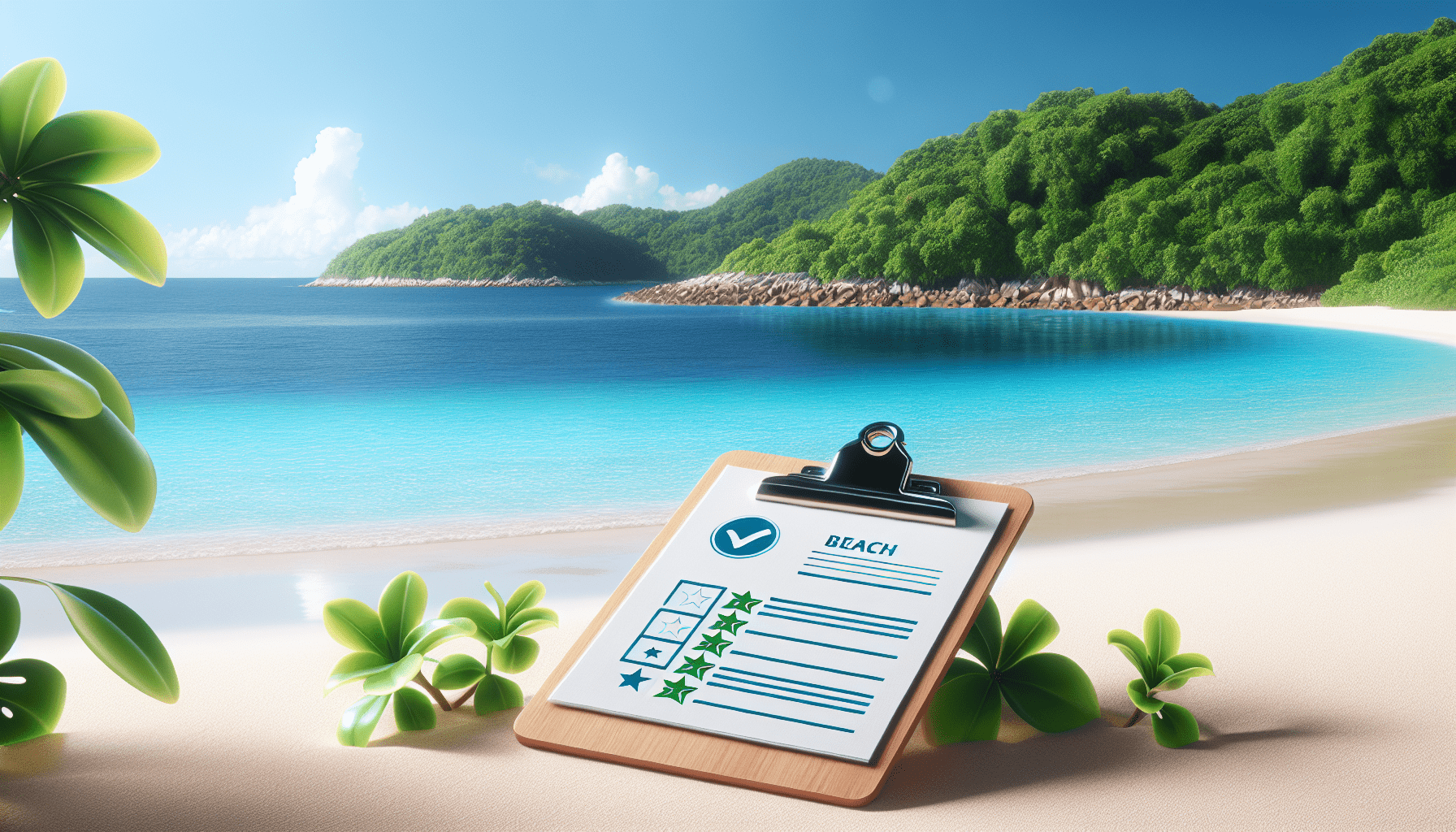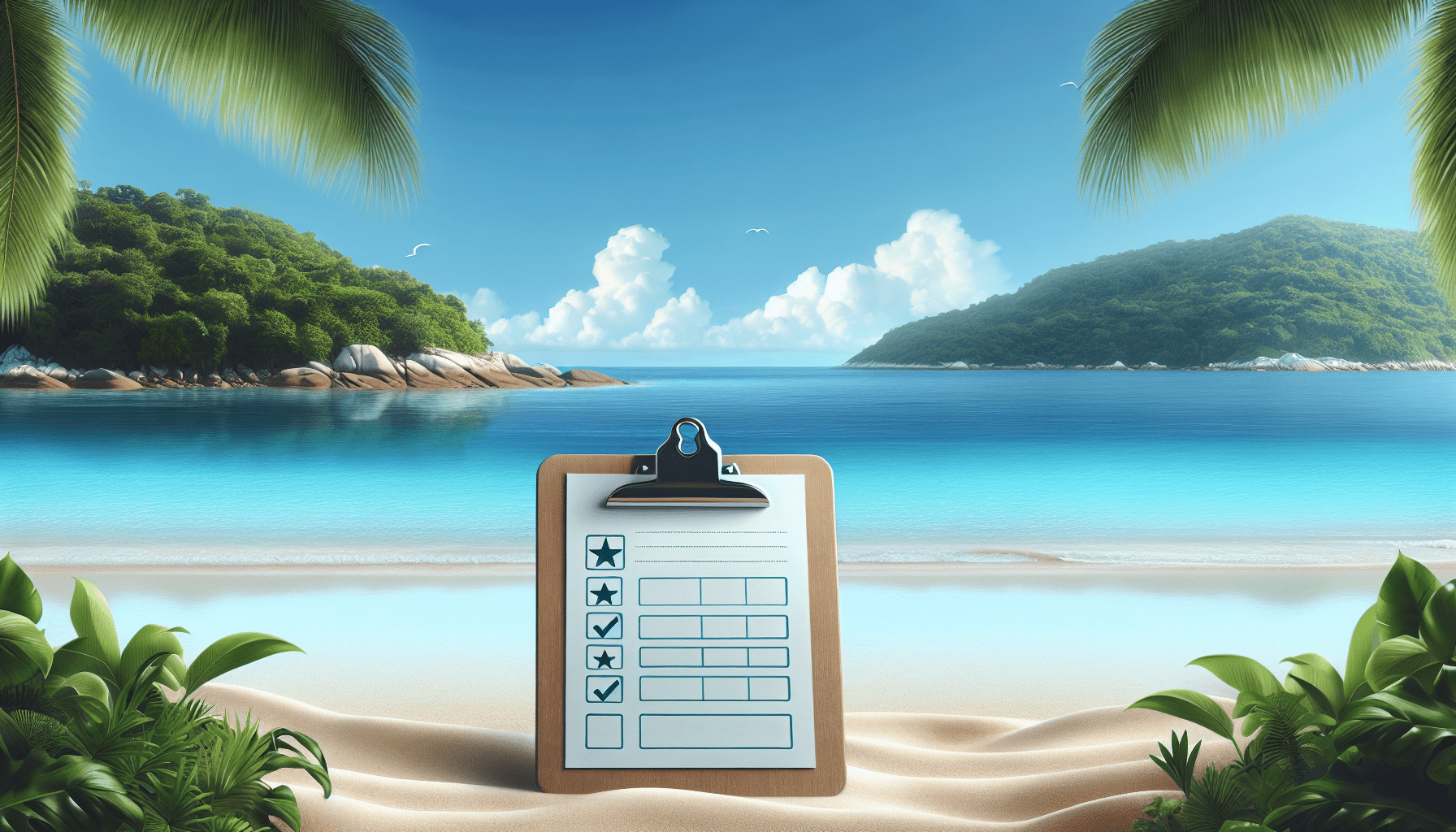EACHY Travel Makeup Bag,Large Capacity Cosmetic Bags for Women,Waterproof Portable Pouch Open Flat Toiletry Bag Make up Organizer with Divider and Handle
$20.39 (as of April 24, 2025 06:56 GMT +00:00 - More info)Heal the Bay has just released its 23-24 Beach Report Card, shedding light on the water quality of over 700 Pacific Coast beaches. If you’re planning a beach visit in California, this report is your go-to guide for choosing spots with safe swimming conditions. While the majority of beaches earned high grades during the summer season, the winter months revealed alarming levels of pollution, mainly due to increased rainfall and outdated sewer systems. You’ll find out which beaches hit the “Beach Bummer List,” including several in San Diego County, and get insights from environmental experts like Annelisa Moe on the main factors contributing to beach pollution. Dive in for a detailed look at which coastal spots to avoid for a better and safer beach experience. Have you ever wondered just how clean your favorite beach is? You’re not alone. It’s easy to assume that the picturesque shorelines of California are pristine, but real life can sometimes be a bit messier. Luckily, we have some dedicated folks at Heal the Bay who do the hard work of keeping track. This year, they’ve released the 23-24 Beach Report Card, and I am here to break it down for you in all its glorious (and sometimes not-so-glorious) detail.

Shop These Accessories for a Comfortable Trip
The Scoop on the Beach Report Card
Every year, Heal the Bay rolls out its Beach Report Card, an essential resource for anyone who loves hitting the surf and sand. With more than 700 Pacific Coast beaches under the microscope, these report cards are no small feat. Heal the Bay rates each beach from A to F based on bacterial pollution levels, with an ‘A’ being gold star territory and an ‘F’ indicating you might want to skip that beach picnic.
Why It Matters
You may ask, “Why should I care about some letter grade?” Well, here’s the thing: lower grades mean higher chances of bacterial contamination. This isn’t just an abstract “ick” factor. We’re talking about real health risks like skin infections, gastrointestinal issues, and even more severe illnesses. So, yes, it matters quite a bit.
A Tale of Two Seasons
One of the standout points from the 23-24 Beach Report Card is that seasonal variations in beach quality are significant. Let’s explore how summer and winter fare differently and why you should care.
Summer Sunshine and Cleaner Beaches
In the bright, warm days of summer, 90% of California’s beaches earned an A or B grade. That means for most of you, beach days can continue with minimal worry. Whether you’re a sunbather, surfer, or sandcastle architect, this is music to your ears.
Winter Woes: The Downside of Rain
But come winter, the scene doesn’t look so rosy. Only 66% of beaches received those coveted top grades. Increased rainfall during the colder months washes contaminants from the streets into the ocean, diving water quality to a concerning low. Add outdated sewer systems to the mix, and you’ve got a recipe for some serious beach bummers.

Shop These Accessories for a Comfortable Trip
The Beach Bummer List
Let’s talk about this year’s Beach Bummer List—basically the honorary hall of shame for the worst-rated beaches. These are spots where bacterial levels are sky-high, leading Heal the Bay to suggest you find somewhere else to lay your towel. If you’re an ocean enthusiast, here are the beaches you might want to avoid for now.
| Rank | Beach Name | County |
|---|---|---|
| 1 | Tijuana River Mouth | San Diego County |
| 2 | Playa Blanca | Baja, Mexico |
| 3 | Santa Monica Pier | Los Angeles County |
| 4 | Tijuana Slough | San Diego County |
| 5 | Linda Mar Beach | San Mateo County |
| 6 | Lakeshore Park | San Mateo County |
| 7 | Imperial Beach at Seacoast Drive | San Diego County |
| 8 | Border Field State Park | San Diego County |
| 9 | Marina del Rey Mother’s Beach | Los Angeles County |
| 10 | El Faro | Baja, Mexico |
A Deep Dive into the Top Offenders
Now, let’s take a closer look at some of these locales.
Tijuana River Mouth
Leading the pack (not in a good way) is Tijuana River Mouth. If you’re thinking about catching some waves here, you might want to reconsider. This spot has been consistently problematic, primarily because it’s a conduit for pollution from urban runoff and agricultural waste. There’s hardly anything appealing about knowing you might be swimming in a cocktail of contaminants.
Playa Blanca
Taking the unfortunate second spot is Playa Blanca in Baja, Mexico. While it’s south of the border, it’s still a popular spot for California residents. The issues here are similar—urban runoff and subpar sewage systems make it a problematic locale for ocean lovers.
The San Diego Situation
Interestingly enough, four of the top ten offenders are in San Diego County. This is particularly concerning for surfers and beachgoers in the area. If San Diego is your go-to, think twice before hitting these spots until things improve.
Why These Beaches Fail
So why are these particular spots so bad? Annelisa Moe, a scientist at Heal the Bay, explains that most of these sites suffer from urban runoff and aging sewage infrastructure, especially following big storms. When storms hit, all kinds of pollutants from city streets and sewer systems get flushed out to the ocean, dramatically lowering water quality.
What Can Be Done?
You’re probably wondering what measures are in place—or what else could be done—to improve the situation. After all, we all want our beaches to be as safe and enjoyable as possible.
Upgrading Sewage Systems
One critical step is improving our sewage infrastructure. Many California sewer systems are outdated and struggle to handle the demands placed on them. This often leads to overflows and contamination, which you don’t have to be a scientist to understand is bad news for beach water quality.
Reducing Urban Runoff
Urban runoff, especially after storms, significantly contributes to the pollution problem. Cities could implement better stormwater management systems that filter out or lessen contaminants before they reach the ocean.
Public Awareness
Education is another vital element. The more people know about the impact of their actions—like littering or improperly disposing of waste—the better equipped society will be to make positive changes.
Advocacy and Policy Change
Lastly, advocacy and public pressure can play a big role. Heal the Bay’s work is a prime example of how non-profits can push for public and governmental action, driving improvements in water quality standards and implementation.
Bringing the Good Vibes Back
It’s not all doom and gloom, folks. Many California beaches are sparkling clean, especially during the summer. If your favorite spot hasn’t shown up on the Bummer List, count yourself lucky and make sure to maintain its glory by practicing good beach etiquette.
Good Beach Practices
Respecting the beach doesn’t just mean picking up after your dog or cleaning up your picnic area. It also entails being mindful of how your actions can affect water quality. For example, using eco-friendly sunscreens and minimizing plastic use can go a long way in protecting our shores.
Supporting Heal the Bay
Organizations like Heal the Bay thrive on community support. Whether it’s through donations, volunteering, or simply spreading the word, your involvement can significantly impact their ability to monitor and improve beach quality.
Looking Forward
While the 23-24 Beach Report Card has its fair share of disappointing news, it also serves as a wake-up call. It’s a reminder that while many of our beaches are beautiful, they’re not invincible. Continued efforts in improving infrastructure, reducing runoff, and raising awareness are crucial if we are to preserve these natural treasures for future generations.
Next Steps for You
If you’re planning a trip to any of the beaches on the Bummer List, maybe choose an alternative spot this year. And if you’re passionate about protecting our beaches, there are plenty of ways to get involved, from community clean-ups to supporting environmental advocacy programs.
So next time you lay out your beach towel, remember that there’s more to our beautiful coastline than meets the eye. With collective effort and attention to these annual reports, we can make sure that California’s beaches stay clean, safe, and enjoyable for everyone.
Join the Conversation
Keep the conversation going by sharing your thoughts and experiences. Have you ever had a not-so-nice encounter at one of the listed beaches? What steps do you take to contribute to beach cleanliness? Your insights can help others make informed decisions and inspire more people to take action. After all, our beaches belong to everyone, and protecting them is a community effort.
Shop These Accessories for a Comfortable Trip






